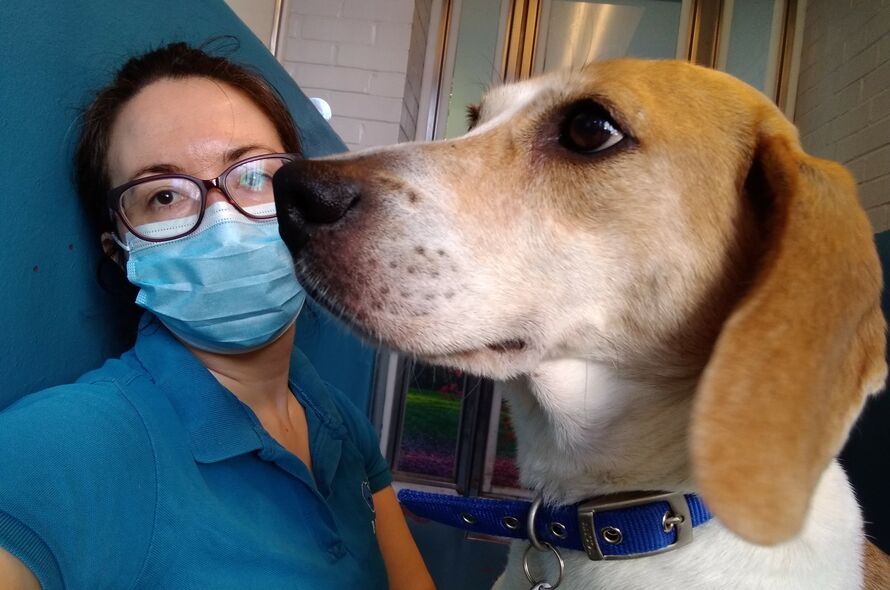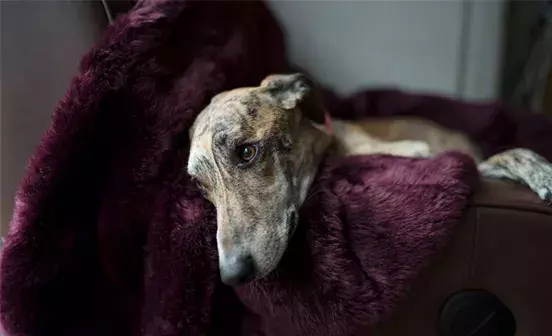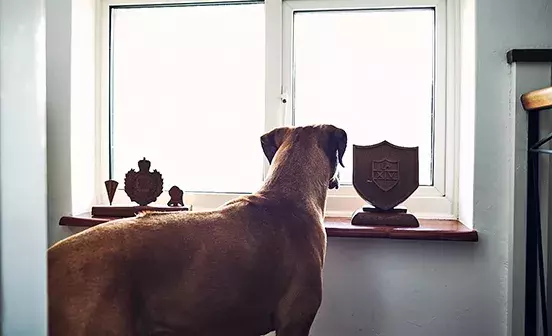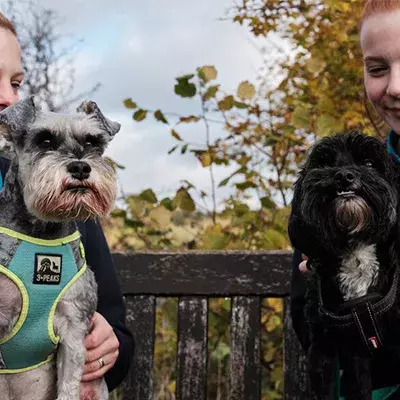As lockdown restrictions ease and the world starts to adjust to a new way of living, it is likely that face masks or coverings will become much more common when out and about, at least for the near future.

Many of us may take time to adapt to this new way of life, but it’s important to remember that many of our dogs will also find it difficult to adjust. To help with this, we’ve put together our step by step guide to getting your dog used to people wearing face masks or coverings.
Dogs are very good at reading body language and can detect even tiny changes in facial expressions. Face masks naturally stop a dog from being able to read all of our facial expressions and this can sometimes make them scared or anxious. Certain masks or face coverings may also muffle or change the sound of your voice which can be confusing for your dog.
These new practices will be a learning curve for lots of people, and our animals are no different. It’s important to try to prepare your dog ahead of time, and keep them as calm and comfortable as possible around people in face masks.
How to get your dog used to people in face masks
In order to teach our dogs that a face mask is not something to be afraid of, it’s important to first get them used to masks at home, or somewhere familiar to them where they are able to relax and won’t be too distracted.
Step 1 – Get your dog used to the face mask
Stand next to your dog with the mask or face covering in your hand and ask them for a behaviour that they already know, such as a ‘sit’ or ‘down’. Once your dog is comfortable listening and responding to you with the face covering in your hand then you can move on to the next step.
If your dog is still uncomfortable, place the mask on the floor slightly away from you and spend some time playing with them. Once you’ve finished playing, put the mask away and try again the following day.
Step 2 – Gradually get your dog used to the face mask covering your face
Next, hold the face mask up to your face, just for a second or two and immediately reward your dog. Once your dog is comfortable with you doing this, hold the face mask in front of your face again. This time ask for a behaviour that your dog knows well and then reward them again.
Once your dog seems comfortable, put the mask on and repeat the steps. Build this up gradually, over a few different sessions if necessary, until your dog is staying calm and responding to you as normal when you’re wearing the mask.
If your dog is worried, try covering your face gradually, a bit at a time, allowing them to get used to each part being covered before moving on.
Step 3 – Introduce your dog to other people they know wearing masks
Once your dog is comfortable with you wearing the mask, it’s time to try the same thing with another person, as safely as possible. This would ideally be another adult with whom you live.
To begin with, ask them to come into the room wearing a mask, but without approaching the dog. If your dog acknowledges them and remains calm, give them a reward.
If your dog shows any signs of being anxious you may need to go back a step and make sure your dog is relaxed around the mask itself. You could also ask the person to approach from further away if possible, or to cover their face gradually and build this up in the same way you did in step two.
Once your dog is relaxed, you can gradually allow the person they know to come closer.
Step 4 – Prepare your dog for strangers wearing face masks
Once your dog is comfortable with people they know wearing a mask inside, it is time to move your training sessions outside. This will help your dog get used to face masks being worn by different people in different environments.
Start by practicing the first few steps again outside. Once your dog is comfortable, ask the person they know to approach wearing a mask. Make sure they approach gradually, stopping a distance away and only getting closer once the dog has had time to adjust. Remember to reward your dog every time they look at the person calmly without becoming agitated.
Step 5 – Put your training to the test
Once your dog is staying calm when someone they know approaches them wearing a face mask it’s time to get out there and put your training to the test. Maintaining social distancing when out in public will allow your dog space and time to adjust to different environments as well as following government guidelines. For the first few trips, make sure to reward your dog for staying calm around strangers wearing masks or other face coverings. This will help show them that people in face masks in a general setting are nothing to be afraid of.
Are you going back to work, or generally getting out of the house more as lockdown restrictions ease? Check out our advice for helping your dog deal with separation anxiety.


